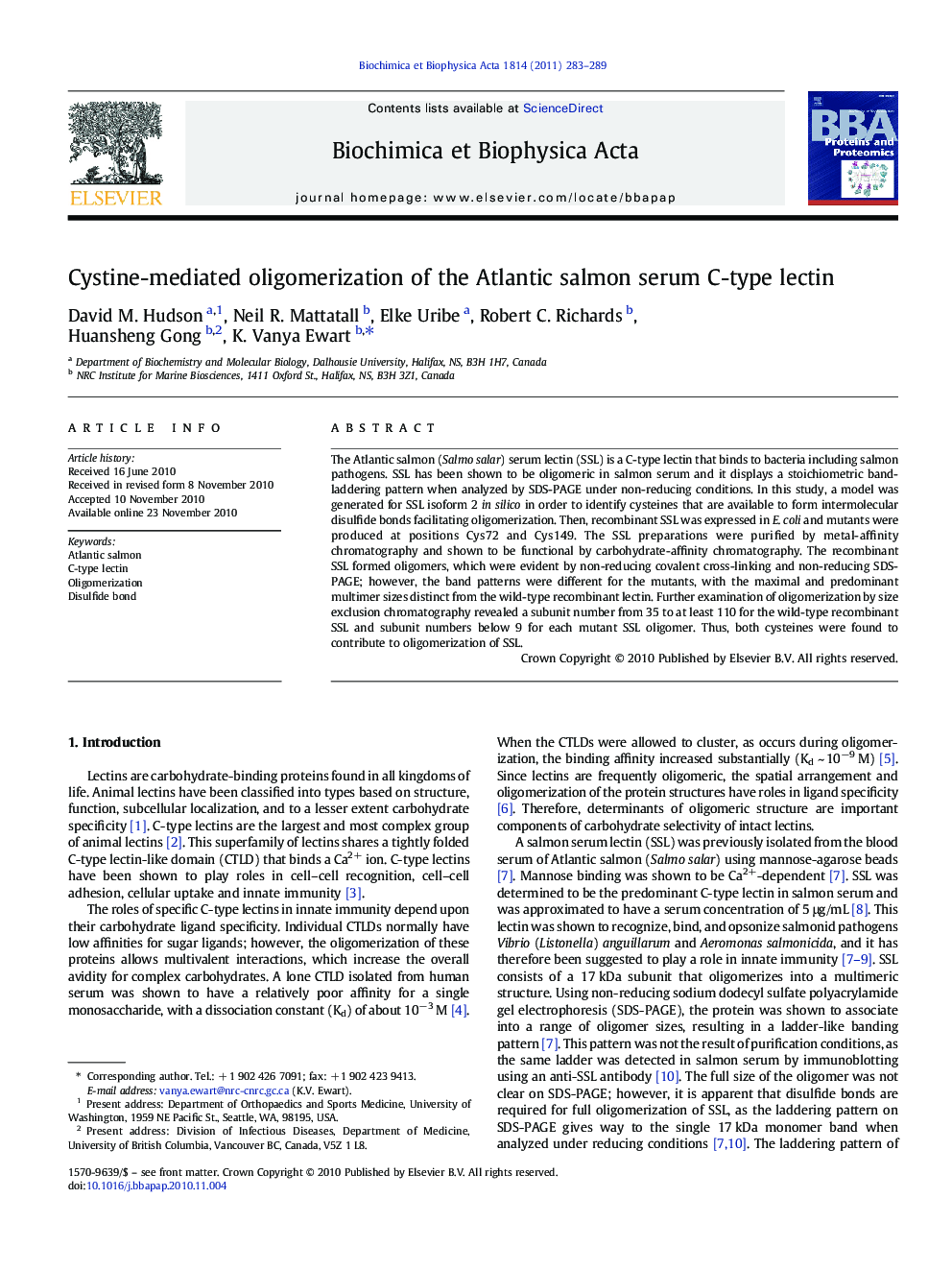| Article ID | Journal | Published Year | Pages | File Type |
|---|---|---|---|---|
| 1178122 | Biochimica et Biophysica Acta (BBA) - Proteins and Proteomics | 2011 | 7 Pages |
The Atlantic salmon (Salmo salar) serum lectin (SSL) is a C-type lectin that binds to bacteria including salmon pathogens. SSL has been shown to be oligomeric in salmon serum and it displays a stoichiometric band-laddering pattern when analyzed by SDS-PAGE under non-reducing conditions. In this study, a model was generated for SSL isoform 2 in silico in order to identify cysteines that are available to form intermolecular disulfide bonds facilitating oligomerization. Then, recombinant SSL was expressed in E. coli and mutants were produced at positions Cys72 and Cys149. The SSL preparations were purified by metal-affinity chromatography and shown to be functional by carbohydrate-affinity chromatography. The recombinant SSL formed oligomers, which were evident by non-reducing covalent cross-linking and non-reducing SDS-PAGE; however, the band patterns were different for the mutants, with the maximal and predominant multimer sizes distinct from the wild-type recombinant lectin. Further examination of oligomerization by size exclusion chromatography revealed a subunit number from 35 to at least 110 for the wild-type recombinant SSL and subunit numbers below 9 for each mutant SSL oligomer. Thus, both cysteines were found to contribute to oligomerization of SSL.
Research Highlights► The salmon serum lectin (SSL) is modeled and surface cysteines are identified. ► Recombinant wild-type SSL and cysteine mutants are expressed in E. coli. ► Laboratory analyses reveal that both cysteines form intermolecular bonds. ► Analyses also show variation in the size of the covalent oligomers formed by SSL.
